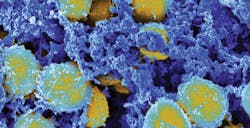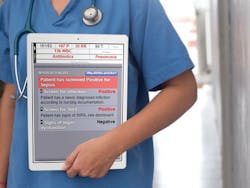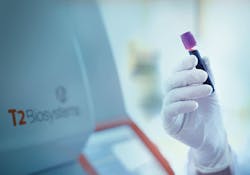Our immune system is a wondrous defender, always on duty, protecting our body from bacteria, viruses, and other harmful invaders. But, sometimes, it can go a little haywire and turn on itself. That is how sepsis begins. The result can be serious damage and even death.
Sepsis can be tricky to diagnose. It is not clear cut, because the symptoms can be attributed to other causes. Diagnosis of sepsis is not based only on an infection but on several symptoms. Some people are more susceptible to sepsis: the very young, the very old, those with chronic illnesses, and the immunocompromised.
Severe sepsis can lead to organ dysfunction such as difficulty breathing, low or no urine output, abnormal liver tests, and changes in mental status. Septic shock is the most serious level of sepsis and is diagnosed when blood pressure drops dangerously.
Approximately thirty percent of septic patients die. Even those who survive can have serious, lingering health problems from post-sepsis syndrome. Clearly, early detection of sepsis can save lives and limit health issues following recovery. Too much attention cannot be given to this life-threatening condition.
Sepsis Alliance
Help is available from the Sepsis Alliance. Tom Heymann, Executive Director, talked about the human toll of sepsis. “Sepsis is the body’s overwhelming and life-threatening response to infection that can lead to tissue damage, organ failure, and death. In the U.S, 1.7 million people are diagnosed with sepsis and about 270,000 Americans die from sepsis each year. It is important to know the symptoms and get treatment immediately, because as many as 80 percent of sepsis deaths could be prevented with rapid diagnosis and treatment.”
Sepsis Alliance created a tool to help caregivers diagnose sepsis quickly. “TIME is an acronym to remind people of the symptoms of sepsis and to seek treatment fast when they are recognized. The TIME acronym stands for the following:
T — Temperature, higher or lower than normal
I — Infection, may have signs or symptoms of infection
M — Mental decline, confused, sleepy, difficult to rouse
E — Extremely ill, ‘I feel like I might die,’ severe pain, or discomfort”
“Currently there are no tests that can directly diagnose sepsis,” stated Heymann, “but there are blood and confirmatory tests that can indicate whether or not an infection is present. From this, the physician may suspect sepsis.”
Those who survive sepsis are still not out of the woods. “Sepsis survivors may be left with long-term health issues, such as physical, cognitive, or psychological problems. Up to 50 percent of sepsis survivors experience post-sepsis syndrome, which includes insomnia, extreme fatigue, poor concentration, decreased cognitive function, and other long-term effects,” noted Heymann.
The cost is significant as well. “Sepsis has been named the most expensive in-patient cost in American hospitals, averaging more than $18,000 per hospital stay,” he added.
Heymann suggests joining the Sepsis Alliance›s newsletter (https://www.sepsis.org/newsletter/) to stay informed about upcoming sepsis-awareness events, sepsis webinars for healthcare providers, and the Sepsis Alliance’s latest initiatives. More information about sepsis and resources for sepsis survivors and their caregivers is available at https://www.sepsis.org/.
Tools to aid in speedy diagnosis of sepsis
Communication between multiple caregivers is vital when sepsis is suspected. The Ascom Healthcare Platform connects devices, systems, information, and healthcare teams, transforming fragmented data into accessible information that supports clinicians from the bedside to intensive care units to operating rooms and more. Gianluca Testasecca, Business Development Manager, Platform Solutions, explained its advantages. “The first rule in managing sepsis is to manage time effectively. With the Ascom Healthcare Platform, we can manage and react in a time-sensitive way to sepsis detection, activating a code blue and thus enabling the care team to manage the patient promptly.”
An advantage of the Ascom Myco 3 is that the battery is hot swappable. “The caregiver is always online and connected,” noted Testasecca. “Nurses can also take and share pictures of the area of concern, such as a wound.
“For sepsis detection, to enhance caregivers’ awareness of patient deterioration, it is important to have an easy and continuous detection of the vital parameters coming from the medical devices connected to the patient (e.g., monitors),” observed Testasecca. “Ascom Digistat software can then forward these vitals directly to the electronic medical record (EMR) and, if requested, integrate them automatically in a scoring system used to detect and track patient deterioration (e.g., NEWS).
Joseph Beals, PhD, Vice President, Informatics and Innovation, PeraHealth, described PeraHealth’s Rothman Index (RI) “as the first algorithm that derives one simple score from data in the EMR to create a picture of any patient’s condition over time — any age, any disease, any care setting.”
Explaining how the RI can speed diagnosis of sepsis, Michael Rothman, PhD, Chief Science Officer, PeraHealth, said, “The RI provides an objective ‘common language’ for gauging patient deterioration, which assists in flagging patients and helping clinicians rapidly determine sepsis risk. Some hospitals also use the RI to monitor hundreds of patients from a remote center.” Beals added, “The predictive RI helps providers identify patient deterioration early by placing patients in a visual warning lane. Unlike manual sepsis screens, RI scores calculate continuously. Rothman outlined a couple of added attractions: “The RI significantly reduces the burden of false alerts and wasted time for busy clinicians who need to maximize staffing, and it requires no additional clinician documentation.
“Overall, sepsis-related mortality is relatively low, at about five percent; however,” noted Rothman, “septic-shock—related mortality approaches fifty percent. Hospitals using the RI have been able to reduce mortality by helping clinicians reduce the number of more severe cases, which have the highest readmission rate.” Beals provided examples of hospitals that have adopted the RI and have reported reductions in sepsis-related mortality: twenty-nine percent at Yale New Haven Health’s Bridgeport Hospital and eleven percent at Houston Methodist Hospital. “In November 2018, Sinai Hospital won a Maryland Health Quality Innovator of the Year Award for using the RI to cut sepsis mortality almost in half,” added Beals.
Rothman noted cost benefits of using the RI. “Rothman Index customers have realized sepsis-associated cost-of-care reductions of as much as 13 percent, a level of cost savings that can return millions of dollars to the bottom line.”
Stephen Claypool, MD, Medical Director of the Surveillance Business for Wolters Kluwer, Health, talked about their solution. “POC Advisor delivers actionable, evidence-based treatment recommendations to clinical personnel via the EHR order-entry system to ensure sepsis-bundle compliance and timely delivery of evidence-based care. Because of its highly accurate alerts, POC Advisor identifies sepsis up to 6 hours earlier than the onset of organ dysfunction.”
Here is how it works. “POC Advisor reads clinical documents using natural language processing and analyzes data from the EHR to identify patients with sepsis. The algorithm differentiates abnormalities in lab results and vital signs that are caused by more than a thousand medical conditions from abnormalities due to sepsis, thereby eliminating false-positive alerts that plague other sepsis surveillance systems,” stated Claypool.
Highlighting the importance of communication among multiple caregivers, Claypool said, “Given the urgency of timely detection and treatment, communication between staff is key. Many clinical staff are involved in sepsis identification and treatment, including nursing, rapid response, emergency, and physician staff. POC Advisor helps facilitate communication and provides targeted advice germane to each clinician’s role; clinical team members receive alerts tailored to their roles and responsibilities. Nursing staff receive alerts focused on early detection, to help get the ball rolling on diagnosis, whereas physician alerts focus on selection of ideal treatments. Through early detection, and by guiding delivery of optimum treatment, POC Advisor reduces the severity of sepsis illness, which in turn reduces the likelihood of readmission.”1
Claypool noted that sepsis is a leading cause of death in the US, costing $27 billion nationally. “Costs for sepsis care exceed reimbursement, costing hospitals an average of about $10,000 per patient per hospitalization. POC Advisor helps curb sepsis costs by reducing length of stay, in addition to reducing mortality and improving sepsis-bundle compliance.”
Tim O’Malley, President, EarlySense, explained their system’s role in quickly identifying sepsis. “EarlySense assists in sepsis identification by indicating early warning symptoms to the clinical staff in real time. Continuous monitoring plays a critical role in early detection of clinical deterioration. Early treatment can be the difference between life and death.
“The goal of the EarlySense system is to identify the earliest warning signs,” said O’Malley, “so providers can expedite action, diagnosis, and treatment. Early detection leads to earlier intervention. For every hour a patient is septic, their mortality rate increases by almost 8 percent. EarlySense technology is a tool for clinicians that increases the opportunity to detect changes in a patient’s parameters over time while supporting the facility’s protocol for early detection of sepsis.
“EarlySense continuously monitors the two most important predictors of potential adverse events, heart and respiratory rate, which are updated twice per second and trended for seven days, providing a full picture of the patient’s health and alerting clinicians to changes,” continued O’Malley. “One of the first signs of sepsis is an increase in heart and respiratory rate. EarlySense offers a multi-parameter alert that alerts clinicians a patient is experiencing an increase in these key vital signs over a period of time and should be evaluated.
“In a study of more than 7,000 patient outcomes using the EarlySense system, the number of intensive-care—unit days for transferred patients decreased by 45 percent, overall hospital length of stay decreased by 9 percent, and number of code-blue events decreased by 86 percent, all because patients were treated as soon as they began to deteriorate.”
Diagnostics to confirm sepsis
Physicians face a quandary when sepsis is suspected. Antibiotics need to be administered, but, until the pathogen is identified, it is not always clear as to which antibiotic is needed. Sometimes they will make an educated guess until a blood culture identifies the pathogen and the appropriate antibiotic can be administered. If the wrong antibiotic has been used until diagnosis, that opens the way for antibiotic resistance to develop to the one that was used, so antimicrobial stewardship is a related issue.
“Sepsis is a secondary condition, usually the final common pathway to death,” stated Rose Mary Casados, Senior Worldwide Marketing Manager, Sepsis and TB, BD. “It is the body’s response to an infection. Rapid diagnosis of sepsis, such as using BD BACTEC Blood Culture Media, requires educating clinical staff to recognize the signs of sepsis and to test for it, particularly in patients with pneumonia, urinary tract infection, or wounds that can lead to sepsis.
“Diagnosis is the first step in treating sepsis successfully,” continued Casados. “A key component is promoting best practices in blood culturing and offering proven performance in the diagnosis of sepsis. Offering an integrated blood-culture solution, which includes premium Blood Culture Media (BD BACTEC Aerobic Plus/Anaerobic Lytic Media), automated, scalable, and modular blood-culture instrumentation (BD BACTEC FX Blood Culture instrument) integrated with a data-management solution (BD Synapsys Informatics) can help to improve communication between the healthcare providers and the laboratory, enabling providers to initiate or modify targeted antimicrobial therapy when treating septic patients. Explaining that patients placed on antimicrobial therapy for a prolonged period of time can face increased risk for subsequent antimicrobial-resistant infections, Casados said, “Timely diagnosis of the underlying infection and the initiation of targeted antimicrobial therapies are critical steps in preventing additional complications for patients.
“Clinical studies have demonstrated a two-fold increase in mortality caused by sepsis when inappropriate antimicrobial therapy is given.2 Sepsis is the number one cost of hospitalization in the U.S., consuming more than $24 billion each year.3 It affects an estimated 31 million people per year, of whom six to nine million will die. With continued evidence supporting differentiated integrated blood-culture solution, BD continues its global commitment in the fight against sepsis.”
“Due to the severe, life-threatening nature of sepsis, most sepsis-management protocols require immediate action in the form of broad-spectrum antibiotic therapy,” said Bob Gerberich, CCO, Magnolia Medical Technologies. “Blood-culture results play a critical part in determining the next steps in the treatment path. Therapy can be de-escalated for patients with a negative blood culture, but typically is continued for any patient with positive blood-culture results.
“The challenge is that between 30 percent and 50 percent of positive blood cultures are actually false-positive due to contamination. This leaves physicians with a dilemma in determining the appropriate treatment for patients with positive blood culture results indicating a probable contaminant. More often than not, antibiotic treatment is continued, and additional testing is ordered.
“Magnolia Medical’s Steripath Gen2 Initial Specimen Diversion Device was engineered to reduce false-positive blood-culture results and the associated diagnostic uncertainty, guiding appropriate treatment,” explained Gerberich. He said their claims are “supported by independent peer-reviewed published clinical-trial results of twelve-month sustained contamination rates as low as 0.2%, or ninety-seven percent accuracy.
“Best practices and multiple state mandates, including Rory’s Regulations in New York and Gabby’s Law in Illinois, require the use of evidence-based protocols in the treatment of sepsis,” added Gerberich. “Steripath Gen2 is backed by clinical evidence demonstrating sustainable, reproducible results from major academic and government institutions to community hospitals. Steripath Gen2 is the only technology of its kind backed by two clinical studies and one cost-effectiveness study published in peer-reviewed journals, along with eight presented clinical abstracts.”
Gerberich cited the cost of a contaminated blood culture. “Each false-positive blood culture costs a hospital $4,700 on average. This adds up to $1.2 million annually for a 300-bed hospital and over $5 billion in unnecessary costs in the United States every year. Steripath Gen2 studies have shown an average of $945,000 in savings to the hospital.”
T2 Biosystems offers a product that facilitates action against pathogens in a few hours instead of a few days. Sandy Estrada, PharmD, Vice President, Medical Affairs, T2 Biosystems, and President, Florida Society Health-System Pharmacists, describes T2Direct Diagnostics and how it works for speedy diagnosis. “T2Direct Diagnostics offers the first and only FDA-cleared suite of products (T2Bacteria Panel, T2Candida Panel, and T2Dx instrument) to detect sepsis-causing pathogens in three to five hours, directly from whole blood, without the wait of blood culture, thus allowing for antimicrobial escalation or de-escalation prior to the second dose of antibiotics.”
Estrada explained that the current standard of care in diagnosing bloodstream infections requires a positive blood culture, and subsequent antimicrobial susceptibility testing, to identify the sepsis-causing pathogen. “These conventional methods take three or more days to provide results. Species identification on day 0 allows faster targeted therapy for the patient, for improved patient outcomes, better stewardship, and reduced hospital costs.
“Using T2Bacteria and T2Candida panels in conjunction with sepsis and antimicrobial stewardship best practices can lead to patients receiving the appropriate antimicrobial, possibly preventing progression to sepsis and septic shock, a large cause of readmissions.”
Studies using the T2Dx products have shown reductions in antimicrobial spending as well as length-of-stay reductions, leading to significant savings for the healthcare system.”
References
- Manaktala S, Claypool SR. Evaluating the impact of a computerized surveillance algorithm and decision support system on sepsis mortality. J Am Med Inform Assoc. 2017 Jan;24(1):88-95. Epub 2016 May 25.
- LaRosa SP. Sepsis. Cleveland Clinic Center for Continuing Education. www.clevelandclinicmeded.com/medicalpubs/diseasemanagement/infectious-disease/sepsis. August 2010. Last accessed August 23, 2017.
- Torio CM, Moore BJ. (2016). National inpatient hospital costs: the most expensive conditions by payer, 2013. Statistical Brief #204. Healthcare Cost and Utilization Project. May 2016. https://hcup-us.ahrq.gov/reports/statbriefs/sb204-Most-Expensive-Hospital-Conditions.jsp. Last accessed March 6, 2019.
About the Author

Susan Cantrell
Susan Cantrell is Infection Prevention Editor for Healthcare Purchasing News.








